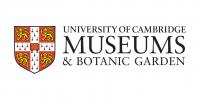Photosynthetic Symbiosis


Shell of Tridacna crocea (top) and the iridescent mantle of Tridacna gigas (bottom).
Like many other bivalves, giant clams (Tridacna spp.) filter seawater for food. However, a supplementary, or perhaps major source of food, is derived from a symbiotic relationship with minute photosynthetic organisms (dinoflagellates) that exist in the mantle surface.
These dinoflagellates give the mantle a golden brown, yellow or green colour, and an iridescent appearance. They gain protection from predation by being associated with such a large organism, while the clam obtains the carbon by-products of photosynthesis.
The dinoflagellates need abundant sunlight in order to photosynthesise. Tridacna clams are therefore found in relatively shallow well-lit waters of coral reefs and lagoons.

Shell of the lucinid Pegophysema philippiana, and the symbiotic bacteria from the gills (photograph courtesy of Prof John Taylor, Natural History Museum London).
Chemosymbiotic bivalves
Some bivalves have formed a remarkable relationship with sulphide- and methane oxidizing bacteria from which they obtain their energy. This chemosymbiosis was first seen in a few species of large clams from deep water hydrothermal vents. It has since been recognized in hundreds of species in a wide range of anoxic environments including sands and muds, mangrove sediments, seagrass beds, areas of sunken vegetation, offshore sewage sites and whale carcasses. It is thought that this symbiosis enables bivalves to inhabit environments where normal food sources are poor or non-existent.





